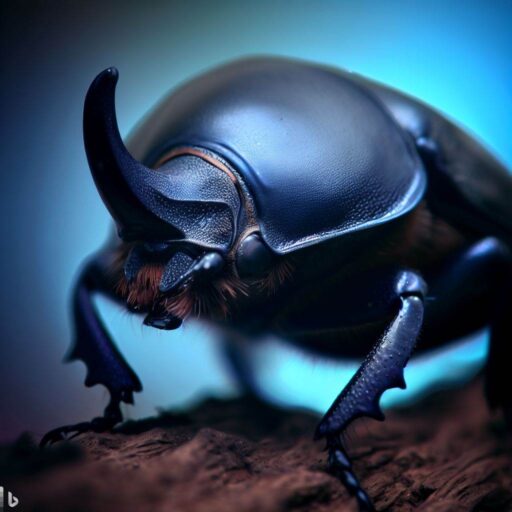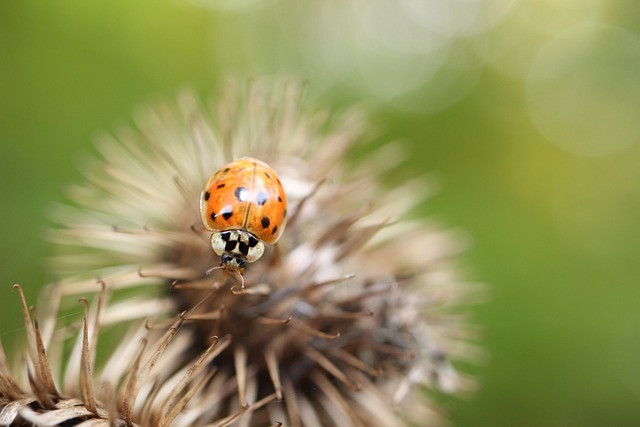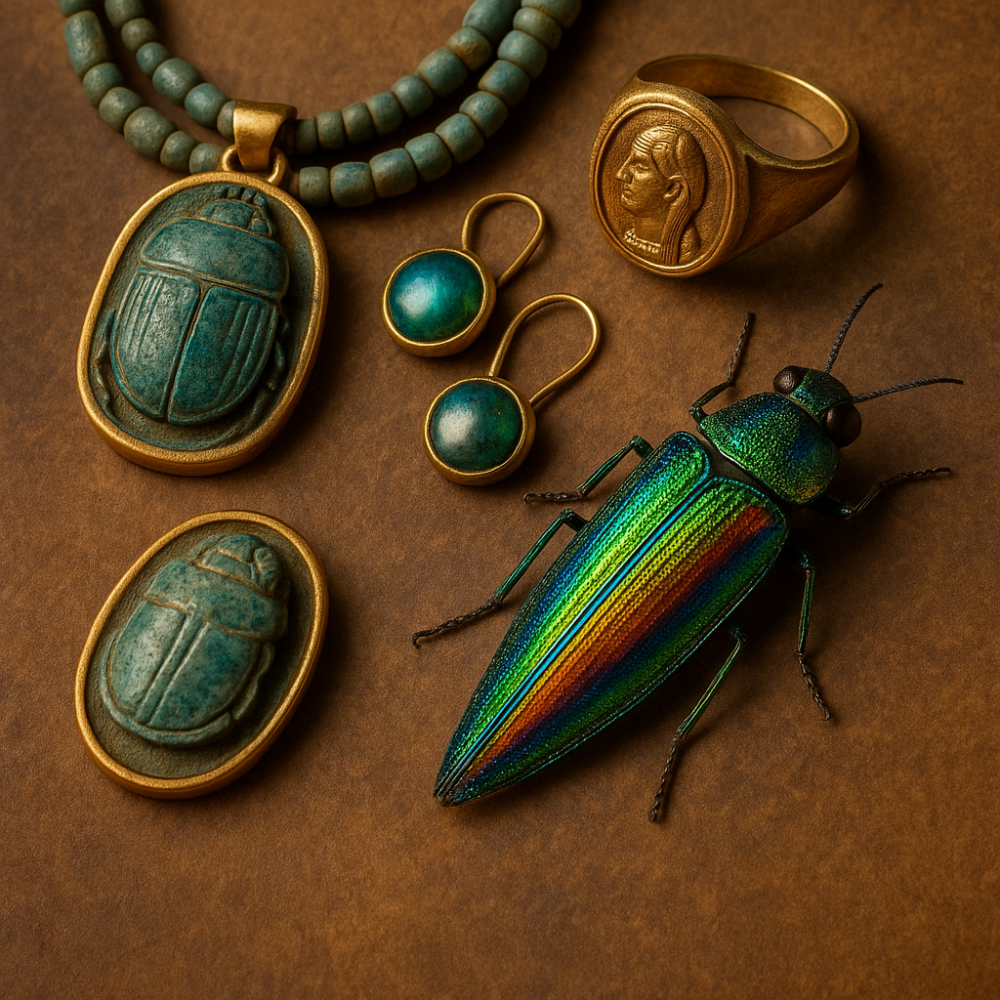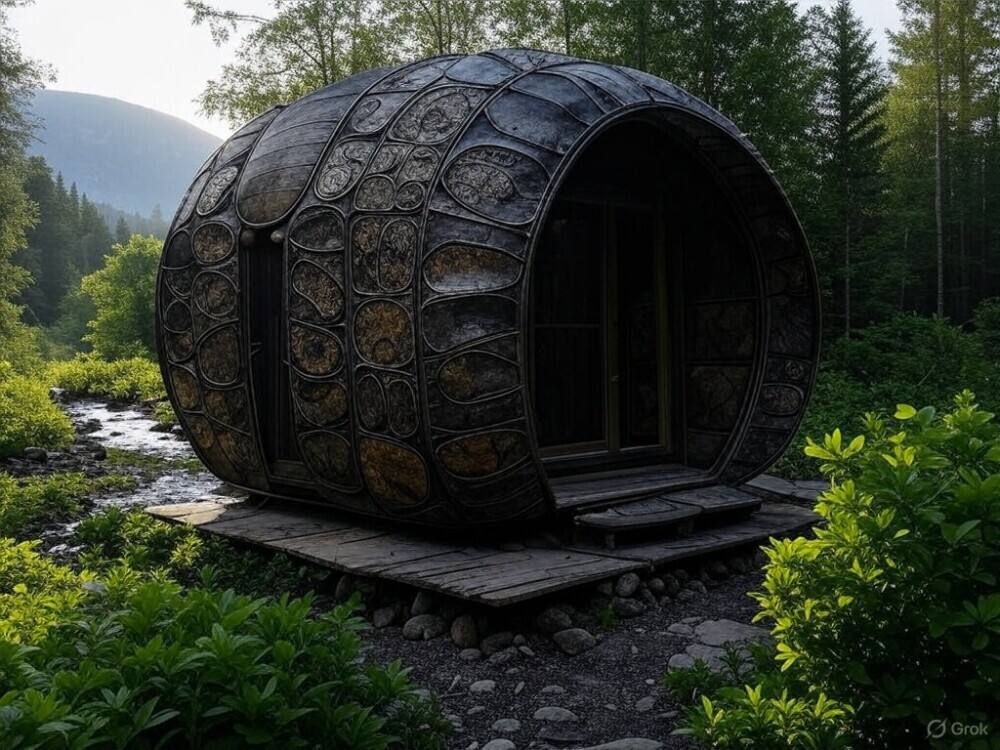Key Takeaways:
- The primary food source of Asian ladybugs is aphids, which they rely on for their survival and reproduction.
- Asian ladybugs may also consume additional foods such as pollen, nectar, and other small insects.
- Environmental factors and seasonal variations influence Asian ladybugs’ food preferences, affecting their foraging behavior and population dynamics.
- To attract Asian ladybugs to your garden, plant beneficial flowers and plants that provide a food source for both ladybugs and aphids.
- Creating suitable habitats and shelters, such as mulch or rock piles, can also help encourage Asian ladybugs to stay in your garden.
- When managing Asian ladybug infestations, consider natural pest control methods such as introducing predators or using traps rather than relying solely on chemical treatments.
- Chemical treatments should be used only for severe infestations and should be handled with caution to minimize harm to beneficial insects and the environment.
Asian ladybugs, known for their vibrant colors and beneficial role in agriculture, have specific dietary preferences that shape their behavior. In this section, we will delve into their primary food source, as well as the additional foods they consume.
Understanding their feeding habits can help us appreciate the crucial role these tiny creatures play in our ecosystem.
The primary food source of Asian ladybugs

Asian ladybugs rely on aphids as their primary food source. These small, soft-bodied insects can harm plants. So, by eating aphids, Asian ladybugs help control their population and protect crops and gardens.
Other foods that Asian ladybugs eat include nectar and pollen. These provide them with essential nutrients. This varied diet helps them adjust to different habitats. It also allows them to survive if aphid populations diminish or disappear.
Additional foods consumed by Asian ladybugs
Asian ladybugs eat a variety of foods, in addition to their main source. These extra foods are essential for their survival and reproduction. They like pollen from plants and flowers for their protein and carbohydrate needs.
Nectar from flowers also provides carbs. Plus, honeydew is a sweet treat they can’t resist! Ladybugs are not just herbivores; they are predators, too.
They hunt for mites, scale insects and other small bugs for proteins. In lab settings, they’ve even been seen to eat fungal spores. Depending on the environment, the choice of food for Asian ladybugs may change.
Gardeners should create an inviting atmosphere for these helpful insects. So, watch out, aphids! The Asian ladybugs have arrived, and they’re here to enjoy your buffet!
Impact of Asian ladybugs on aphid populations
Asian ladybugs are powerful predators that can eat a lot of aphids, which are plant-eating pests. They can devour hundreds of them in a single day!
Because of this, they are a valuable asset for farmers and gardeners. They help keep aphid populations in check and limit the damage caused to crops. Asian ladybugs have a huge impact on controlling aphid populations – this cannot be underestimated.
Factors influencing Asian ladybugs’ food preferences
Factors influencing Asian ladybugs’ food preferences are crucial to understanding their dietary habits. Environmental factors and seasonal variations play significant roles in determining what these ladybugs consume.
With changing surroundings and shifting seasons, the food preferences of Asian ladybugs can vary, showcasing their adaptability and flexibility.
By examining the impact of these factors on their diet, we can gain insights into the foraging patterns and ecological interactions of these fascinating insects.
Environmental factors
Asian ladybugs’ food preferences are influenced by various environmental factors. Temperature, humidity and habitat diversity are all key components.
Warmer climates can lead to greater consumption of certain plants, while higher humidity levels attract more ladybugs due to increased aphid populations. Diverse habitats attract more ladybugs due to the availability of prey.
These factors interact and shape the diet and behavior of Asian ladybugs. Gardeners and pest controllers can use this knowledge to attract or manage them properly.
Furthermore, there is variation in food preferences depending on geographical locations. Coastal regions have different food preferences compared to mountainous areas.
This is due to climate-related factors such as salt spray near coasts and cooler temperatures at higher altitudes.
For gardeners, a pro tip is to plant a variety of flowers and plants that attract aphids. This will create a suitable habitat for Asian ladybugs to thrive.
Seasonal variations
To make it clearer, we can create a table to show the seasonal variations and their effect on Asian ladybug diet.
This table shows that the food changes with the season.
Seasonal Food Preferences of Animals
| Season | Food |
|---|---|
| Spring | Pollen and nectar from flowering plants |
| Summer | Aphids, small insects, and plant sap |
| Fall | Ripe fruits and seeds |
| Winter | Overwintering sites with access to moisture |
The details not covered yet are how these ladybugs adjust their feeding habits based on what food is available in each season. This lets them survive in different environments and get the food they need.
If you want Asian ladybugs in your garden, just plant some beneficial flowers and plants. They will love it!
Attracting Asian ladybugs to your garden
Attracting Asian ladybugs to your garden is as simple as planting beneficial flowers and plants while providing suitable habitats and shelters. These methods can significantly enhance your garden’s ecosystem and help control pest populations naturally.

According to the reference data, research has shown that specific flowers, like marigolds and daisies, are particularly attractive to Asian ladybugs.
By implementing these strategies, you can create an inviting environment that encourages these helpful insects to thrive and contribute to your garden’s overall health.
Planting beneficial flowers and plants
Choose flowers known for pollinators, like sunflowers, marigolds, and zinnias. Plant herbs like dill, cilantro, and parsley for Asian ladybugs. Nectar-rich blossoms like butterfly bush or bee balm are also attractive.
Make your garden diverse with different flower colors, shapes, and sizes. Provide safe havens for Asian ladybugs. Dense vegetation, wooden boxes, and stone piles work well. To keep them healthy, no pesticides.
It’s not only about flowers and plants! Factors like temperature, humidity, and water can affect ladybugs’ presence. Plus, seasonal changes in food can impact their comings and goings.
Consider these factors to get the most out of attracting ladybugs.
Get to gardening! Follow the tips and create an inviting environment for ladybugs. Enjoy natural pest control, and the beauty of a balanced garden.
So, start planting to give ladybugs a five-star habitat!
Providing suitable habitats and shelters
Providing suitable habitats and shelters for Asian ladybugs is essential for inviting and keeping them in your garden. They like gardens with diverse plants and flowers, which give them various food sources.
These food sources vary throughout the year, so it’s necessary to supply appropriate options during every season. This ensures a steady food source for the insects.
Growing plants and flowers that release pheromones or provide nectar-rich blooms can also attract ladybugs. Examples of these are marigolds, dill, sunflowers, fennel, and yarrow. These plants are natural drawers for the bugs.
Ladybugs need places to rest, mate, and hibernate during colder months. Thus, it is important to give them appropriate shelters. Wooden structures or insect hotels can be used to form sheltered spots. This gives the ladybugs a safe and cozy place to stay.
Using pesticides must be avoided in order to draw and keep ladybugs in your garden. Pesticides can damage aphids – ladybugs’ food source – and the bugs themselves.
Establishing a chemical-free environment allows the aphids’ population to remain high enough to sustain ladybugs.
It is worth noting that creating suitable habitats for Asian ladybugs necessitates ongoing maintenance and monitoring. Checking and maintaining the garden frequently guarantees the long-term presence of the insects.
Asian ladybugs are admired in gardens around the world because they serve as a natural pest control. Their introduction into ecosystems has been successful in reducing aphids and improving plants’ health. By providing suitable habitats and shelters, gardeners can make use of these beneficial bugs and make a balanced ecosystem.
Managing Asian ladybug infestations
Asian ladybug infestations can be a nuisance, but worry not!
We have effective ways to manage them. In this section, we will explore natural pest control methods and effective chemical treatments for severe infestations.
Discover how to keep your home free from these pesky invaders and restore peace to your living space.
Natural pest control methods
These natural pest control methods are a great alternative to chemical treatments.
Biological controls, such as releasing ladybugs or lacewings, can help control aphids.
Nematodes, which are microscopic worms, can attack and kill soil-dwelling pests.
Physical barriers, like screens or nets, can keep out insects, birds, and rodents.
Row covers can protect plants from insects.
Cultural practices, like crop rotation, can disrupt pests’ life cycles.
Sanitation can help reduce their numbers, too. All of these methods promote a healthier ecosystem while controlling pests.
Chemical treatments for severe infestations
Chemical treatments are a last resort for severe Asian ladybug infestations. These treatments are specifically designed for Asian ladybugs. They can help control and reduce the population of these insects when natural methods don’t work.
Consider the risks and side effects of these treatments. Follow the instructions from the manufacturer carefully. Apply the treatment to affected areas or surfaces where the ladybugs are. This minimizes harm to other plants, animals, or beneficial insects.
Avoid spraying the chemicals recklessly. Use targeted applications instead of broad-scale treatments. This reduces environmental impact of the chemicals and manages the infestation.
Monitor the progress of the chemical treatment. Adjust as necessary. This maintains control of the infestation and prevents further damage.
Chemical treatments should only be used after other options have not worked. Talk to a professional pest control expert. Get appropriate advice based on the situation. Take precautions to minimize negative effects on human health or the environment.
By following these suggestions and using chemical treatments responsibly, homeowners and gardeners can protect their plants from further damage.
Conclusion
Asian ladybugs, also known as Asian lady beetles, are important. They help control pests and support ecosystem balance. They eat aphids, scale insects, and other bad pests. Thus, they protect crops and plants.
Additionally, they feed on nectar and pollen from flowers, aiding pollination and aiding plant reproduction. Plus, they can adapt and eat different foods. This lets them survive in multiple habitats and keep ecological stability.
Furthermore, they have interesting features. For instance, their colorful, patterned wings serve as defense; they warn predators of their bad taste.
Also, they enter a state of dormancy, called diapause, during winter. This allows them to save energy and survive the cold. In spring, they can continue their role as predators and pollinators.
All in all, Asian ladybugs are vital for ecosystems. They help pest control and pollination, which are essential for agriculture and plants. Their adaptability and unique features ensure they can thrive and survive in many habitats.
Some Facts About What Asian Ladybugs Eat:
- ✅ Asian lady beetles primarily feed on aphids and other soft-bodied insects. (Source: Team Research)
- ✅ They are beneficial insects to farmers and gardeners because they help control aphid populations in agricultural crops, gardens, and landscapes.
- ✅ In gardens, Asian lady beetles may also feed on fall-ripening fruits such as grapes, apples, and fall raspberries when they run out of aphids.
- ✅ Asian lady beetles do not infest wood, destroy fabrics, eat food, or carry disease.
- ✅ While they are beneficial insects, there are some concerns associated with Asian lady beetles, such as their ability to bite humans and secrete a strong-smelling yellowish liquid that can stain surfaces.
FAQ
What do Asian ladybugs eat?
Asian ladybugs primarily feed on aphids and other soft-bodied insects, making them beneficial insects for farmers and gardeners. They also consume fruits and other insects, broadening their diet compared to other ladybugs. However, some species may target agricultural crops, causing damage and requiring action to be taken against them.
Do Asian lady beetles pose any serious threats or diseases?
Asian lady beetles do not pose any serious threats or diseases. However, there are some concerns associated with them. They can bite humans, secrete a strong-smelling yellowish liquid that can stain surfaces, and exposure to dead lady beetles can cause allergic reactions in some people.
How do Asian lady beetles enter homes?
Asian lady beetles enter homes through small gaps around doors, windows, and other spaces where different materials meet. Even tight spaces surrounding utility cables and plumbing pipes can serve as entry points. It is important to check for and seal any spaces or cracks that may allow insects easy access to prevent their entry.
What control measures can be taken to prevent Asian lady beetles from entering homes?
To prevent Asian lady beetles from entering homes, it is important to check for and seal any spaces or cracks that may allow insects easy access. Repair or replace damaged screens, install door sweeps or thresholds, and seal areas where utility wires and pipes enter buildings. Using a residual insecticide barrier can also help limit their entry.
How can Asian lady beetles be removed from homes?
If Asian lady beetles are seen indoors, spraying pesticides is not effective. Instead, they can be removed with a vacuum, using a knee-high nylon stocking to capture and dispose of them. Regular inspections and re-application of pesticides can help minimize future infestations.
Are Asian lady beetles beneficial for garden ecosystems?
Yes, Asian lady beetles can be beneficial for garden ecosystems as they eat insects that may harm plants. They are important predators of aphids, which can damage agricultural crops and gardens. However, infestations may require control measures to be taken to prevent their entry into homes.





Leave a Reply